Opening your notebook
What would a notebook review be without Tear Down? On the one hand, the manufacturer does not list all components in detail (e.g. we lacked the exact information about the memory and the installed SSD) and on the other hand we already need the knowledge about the exact structure of the cooling system, in order to be able to measure the test device later in a practical and correct way. The deliberately practical IR measurement, which is only available here, requires precise knowledge of the heatpipe and heat sink positions.
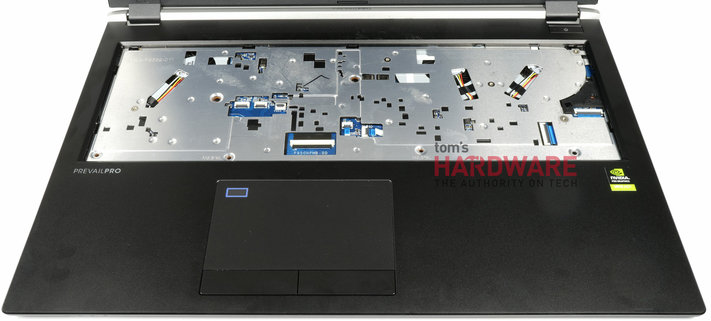
To expose the inner workings, you must first loosen the keyboard from the back with two screws and then press the keyboard forward with a suitable long and thin rod through the opening of one of the removed screws, then gently press it forward. longitudinal with the noses from the fastening. Afterwards, the two connecting cables can be carefully pulled out on the provided tabs.

Now the keyboard is free. The tactile feedback is palpable and even easily audible, but the buttons are still relatively soft. The typing on the very spacious lylocated buttons with the large gaps is very comfortable, but they should have been a bit firmer and tighter. Unfortunately, the low height prevents the use of haptically significantly better scissor buttons.
FlexiKey software offers customizable macros, keyboard recording options, and three-zone RGB backlighting. The lack of LED indicators for the lock or num button is a little annoying, because it can be quite confusing.

Then we loosen the five now exposed screws below the keyboard that fix the bottom shell from above and gently and fold the notebook onto the back to remove the remaining nine screws. After that, the lower shell can be removed somewhat stress-free and the inside is free.
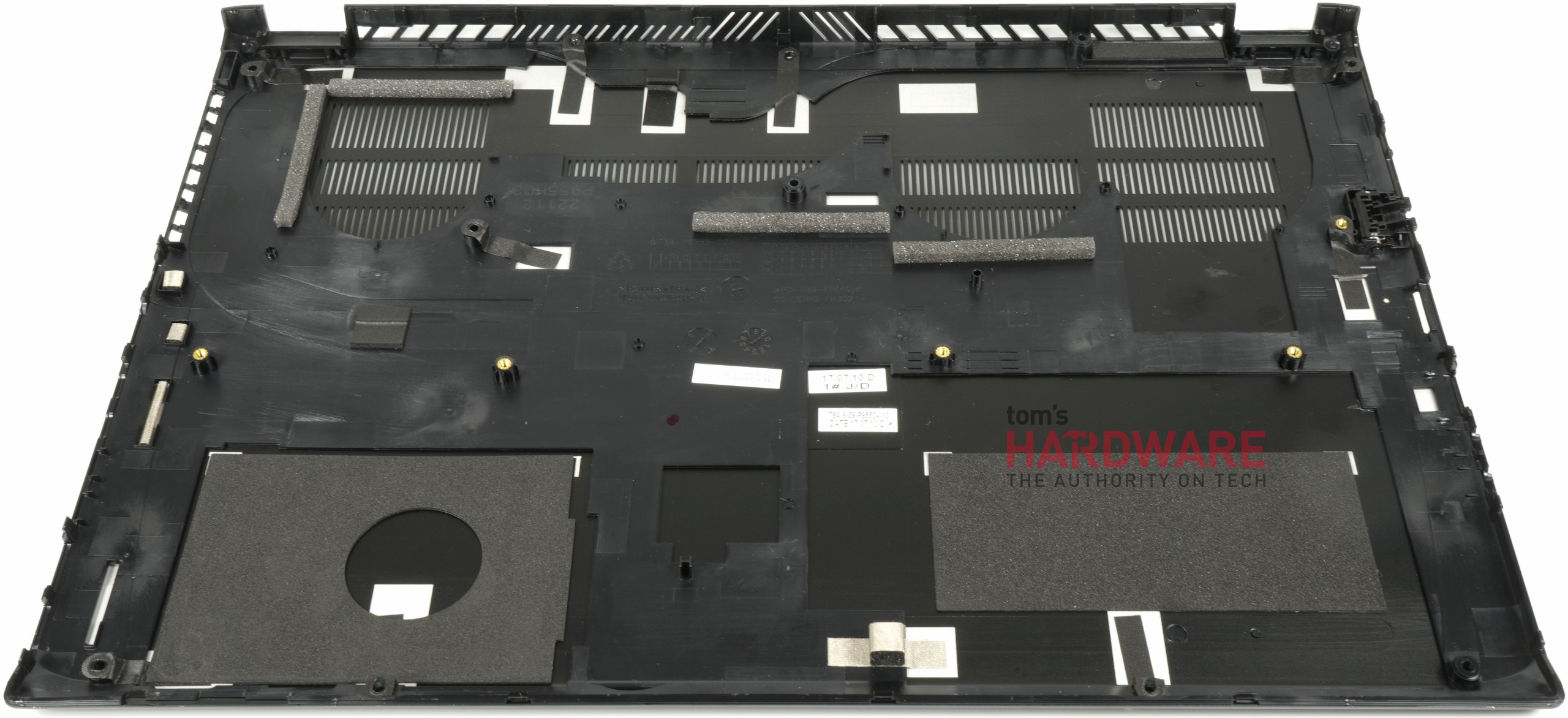
We see a classic solution where you cool the GPU and CPU separately. The battery pack and many other replaceable components are now free and can also be removed relatively easily or if you intend to do so.
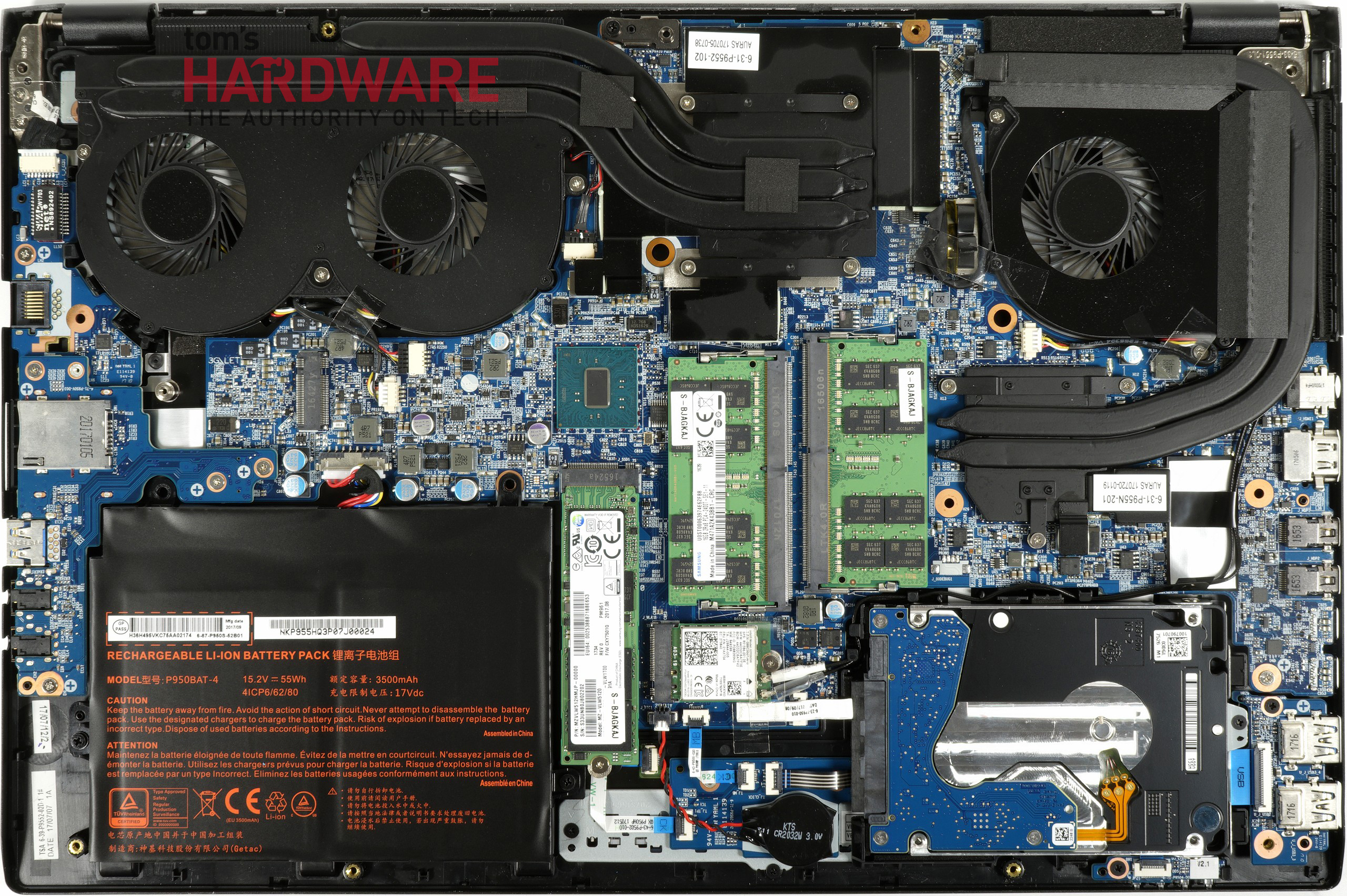
Component analysis
For storage, the ODM relies on OEM memory from Samsung for this notebook. Two 16 GB modules DDR4 2400 (SODIMM) each result in a total of 32 GB of memory expansion in the dual channel. This platform does not provide any more, so it represents the maximum expansion for this motherboard.
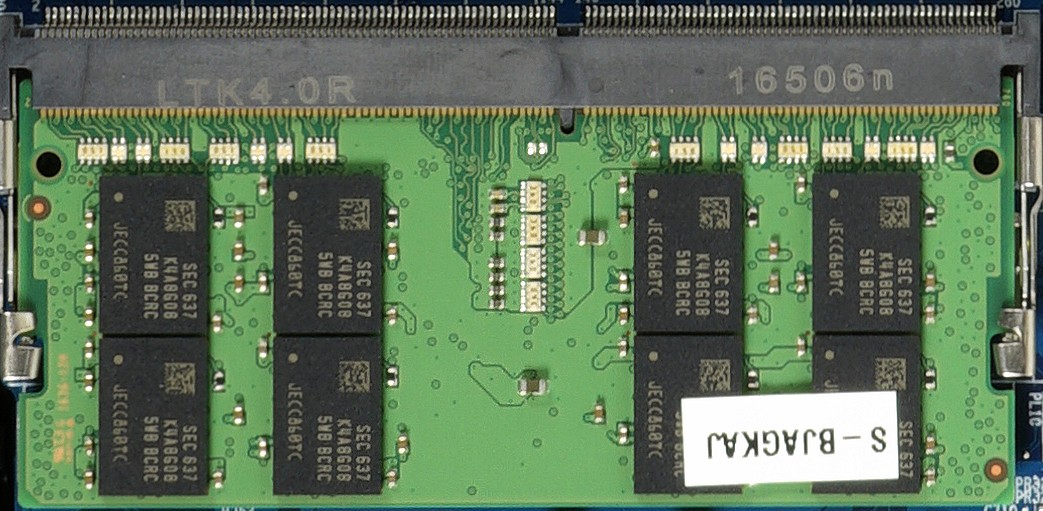
Unfortunately, PNY is also silent on the built-in SSD. Our Tear Down shows that it is a PM961 from Samsung. Of course, we are happy to provide the exact data of this OEM model:
| Capacity: | 512GB |
|---|---|
| Model series: | PM961 NVMe |
| Read speed up to: | 2800 MB/s |
| Write speed up to: | 1600 MB/s |
| Form factor: | M.2 2280 |
| Interface: | M.2/ M-Key (PCIe 3.0 x4) |
| Controller: | Samsung Polaris (S4LP077X01-8030) Controller, 8 channels |
| Chip type: | 3D-NAND TLC Toggle |
| MTBF (Lifetime): | 1,500,000 hours |
| IOPS (Random 4K write): | 260.000 |
| Specifics: | Low Power Standby |
This is a fairly solid model, which is actually intended for OEMs, but is now also available in retail stores. In terms of price, however, there are hardly any advantages over the normal consumer models.

The Wi-Fi module relies on Intel's Dual Band Wireless-AC 8265 and you can also see the two connected cables to the antennas on the right side. Again, this is a very easy-to-plug M.2 module.
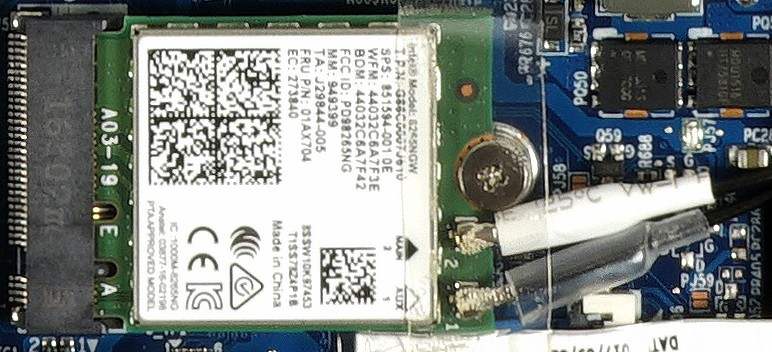
Cooling
The cooling system relies on components from Auras as ODM, which is also one of the largest heatpipe suppliers. Heatsink and heatpipes of GPU cooling come as a complete module, which relies on very flat heatpipes made of composite material. The heat sink is made of copper and, like the rest of the components, is blackened. Two integrated radial fans provide air supply and discharge, which suck the air from the caseback and then press through two lamella chamber coolers. The warm exhaust air is then discharged on the back.
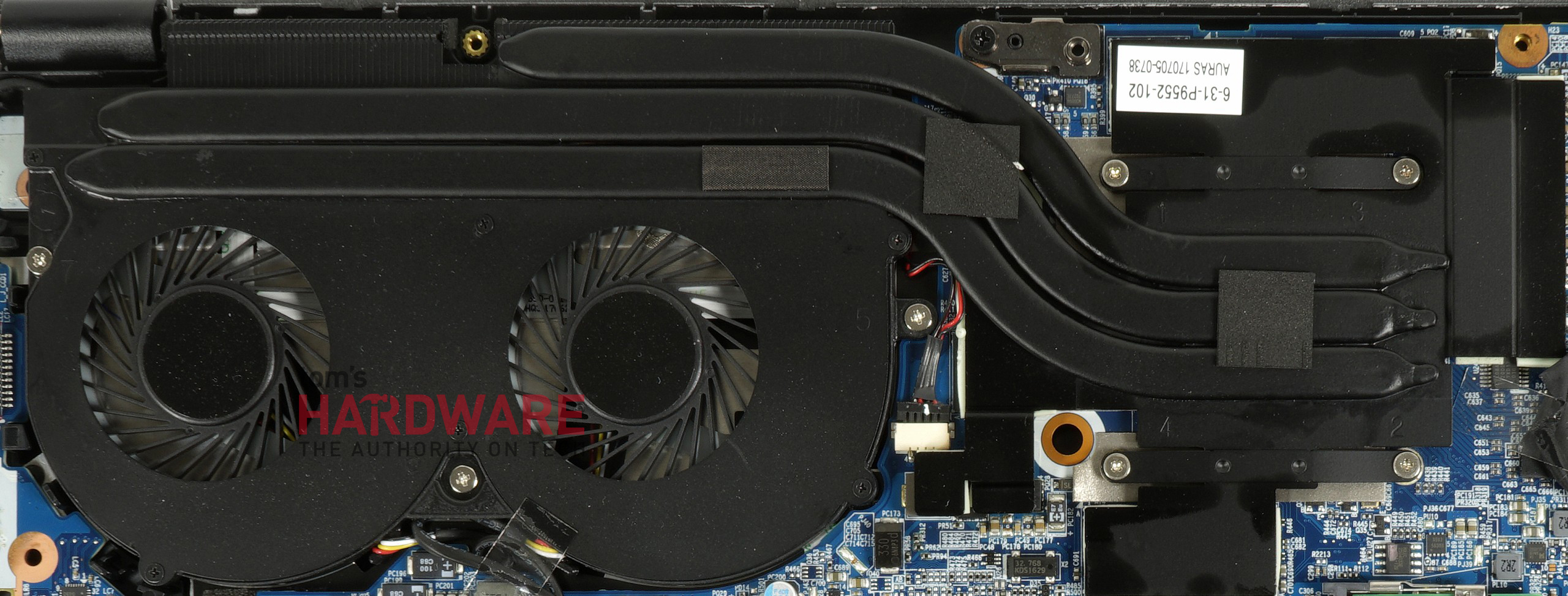
The CPU is cooled separately and this cooling block also comes from Auras. Here, however, two heatpipes must suffice and the cooling chamber for heat exchange has also been a little shorter. However, the warm exhaust air is discharged at the left side of the housing and not at the rear. This is also due to the reason that most users are right-handed and are therefore not (unpleasantly) affected by the warm airflow.
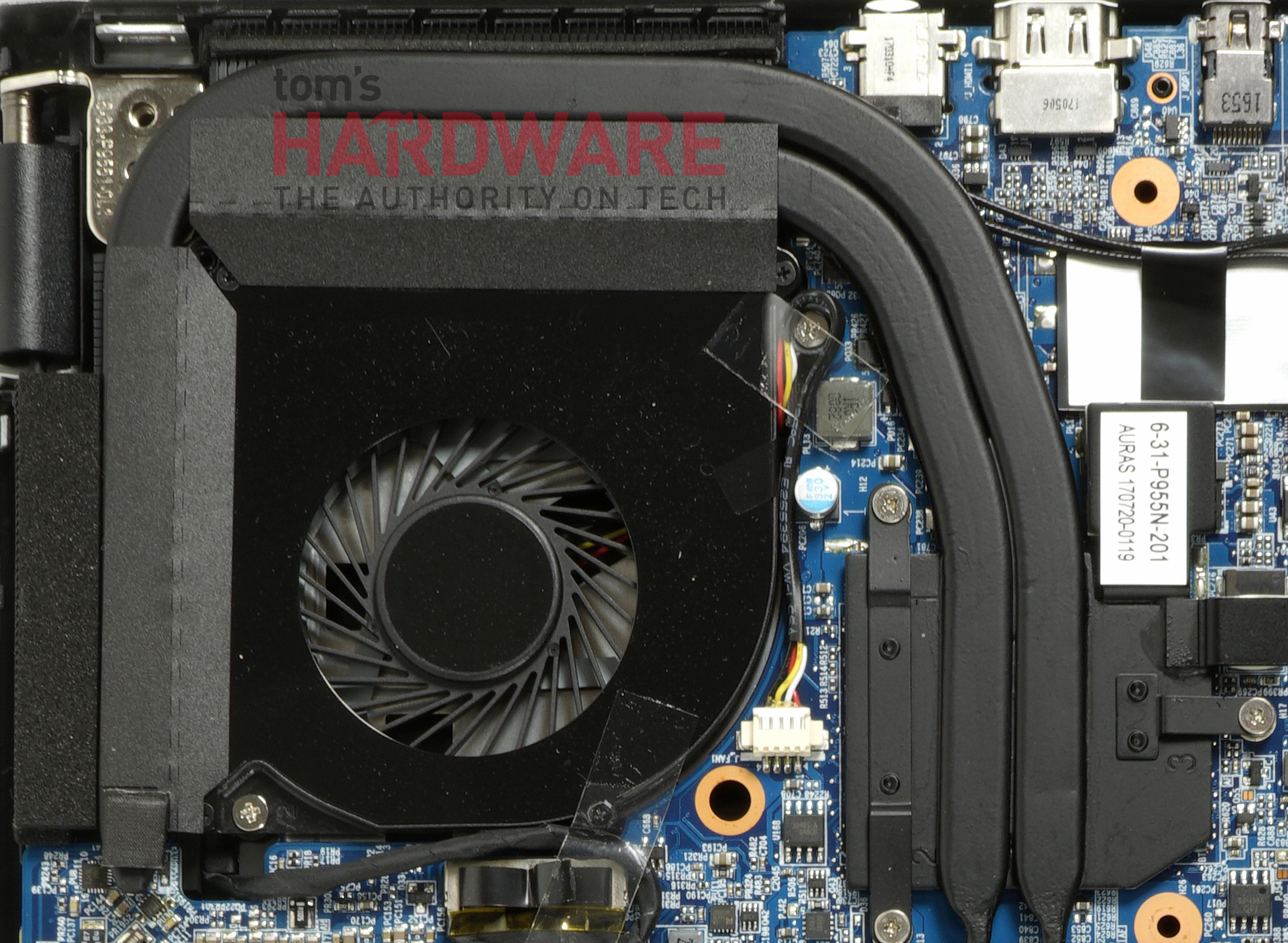
We save ourselves the complete disassembly of the cooling system at this point, because on the one hand we have already disassembled other models of this ODMa and on the other hand other reviewers want to find the original condition as the manufacturer has intended. Using other thermal paste would be uncollegial and unfair.
- 1 - Einführung, technische Daten und Details
- 2 - Tear Down, Komponenten und Kühlsystem
- 3 - Benchmarks: 2D und CPU-lastige Szenarien (Compute Rendering)
- 4 - Benchmarks: Komplexe Workloads und Suiten
- 5 - Benchmarks: Grafik-lastige 3D-Szenarien (OpenGL)
- 6 - Leistungsaufnahme, Laufzeit und Geräuschentwicklung
- 7 - Temperaturen, Takt und Infrarotmessung
- 8 - Zusammenfassung und Fazit

































Kommentieren